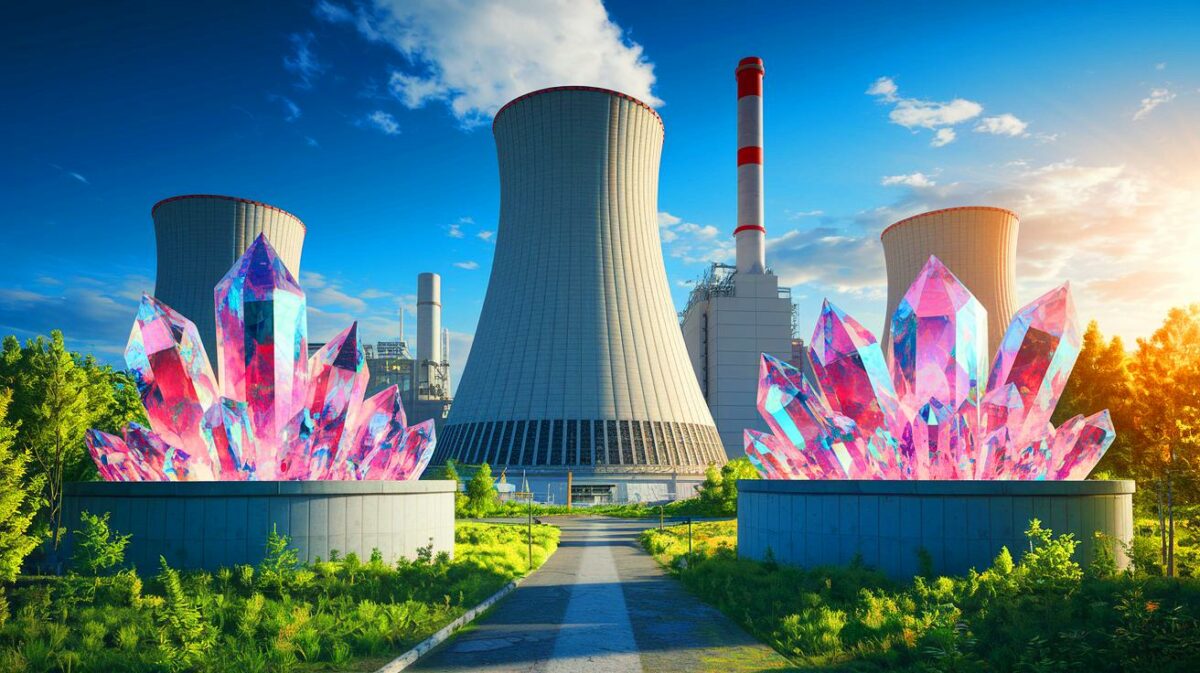| IN A NUTSHELL |
|
The groundbreaking research conducted by the University of Tokyo has unveiled an astonishing discovery in the field of construction materials. Scientists have found that concrete possesses an unexpected ability to self-repair when exposed to nuclear radiation. This revelation could radically transform how we perceive the lifespan of nuclear infrastructure, extending its use far beyond current expectations. By examining the properties of quartz crystals within concrete, this study paves the way for new standards in the construction and maintenance of nuclear power plants, significantly reducing costs and enhancing safety.
The Miracle of Quartz Crystals
Quartz crystals, abundantly present in concrete, have shown regeneration properties when subjected to nuclear radiation. This self-repairing capability is particularly effective under neutron radiation exposure. Such a discovery could dramatically increase the longevity of nuclear facilities, allowing them to operate well beyond their initially intended lifespan. The implications are vast, not only for the nuclear industry but also for civil infrastructure where concrete is widely used. This technological advancement could revolutionize construction standards by integrating materials capable of self-repair, enhancing their durability and reducing maintenance costs.
Advanced Research Techniques
Professor Ippei Maruyama and his team have utilized X-ray diffraction to analyze the changes experienced by irradiated quartz crystals. They discovered that the expansion of these crystals varies depending on the radiation intensity they are exposed to. The higher the radiation level, the more significant the expansion, which explains why these crystals can regenerate. This method has allowed for a detailed understanding of the internal processes of concrete under radiation, providing crucial insights into how nuclear infrastructures can be designed to maximize their resistance and durability. By better understanding these processes, we can adjust concrete compositions to optimize its self-repairing properties.
Reducing Risks and Future Prospects
The study’s findings suggest that potential damage caused by neutrons might be less severe than previously thought. The self-repair of quartz crystals at lower radiation levels demonstrates that concrete not only lasts longer but can also regenerate, alleviating concerns about its durability. The potential impact of this discovery is immense, promising reduced maintenance costs and improved safety for nuclear infrastructures. This advancement encourages engineers and scientists to rethink the materials used in construction, favoring those that offer similar self-repairing capabilities.
Global Implications and Future Research
With 417 nuclear reactors operational in 31 countries and 62 more under construction, according to the International Atomic Energy Agency, this discovery could have global implications. It could influence the choice of materials and design of future reactors, integrating technologies that enhance safety and efficiency. The research team plans to expand their studies to other materials affected by nuclear radiation to enrich our understanding of cracking and expansion mechanisms. These studies promise to bolster the safety of nuclear power plants and support the rise of nuclear energy as a sustainable alternative to fossil fuels.
In conclusion, the ability of concrete to self-repair under nuclear radiation could revolutionize the future of the nuclear industry. By reducing costs and enhancing safety, this advancement presents promising prospects for the development of nuclear power plants. However, it also raises a crucial question: how can these discoveries be integrated into current construction and maintenance practices to maximize their potential benefits?
Did you like it? 4.5/5 (23)









Wow, concrete that repairs itself? That’s some sci-fi stuff! ⚛️
How long will it take before this becomes a standard practice in construction?
Is this self-repairing property unique to nuclear radiation, or could it work with other types of radiation too?
Call me skeptical, but how sure are they about these findings?
Great job, University of Tokyo! This could change everything. 🌟
So, what happens to the concrete after it “heals”? Is it as strong as before?
Hope the construction industry adopts this soon. We need safer infrastructure.
Can this technology be applied to regular buildings, not just nuclear plants?
Is this for real? Sounds too good to be true! 😲
How does this self-repairing mechanism actually work at the molecular level?
Are there any potential downsides or risks associated with this self-repairing concrete?
Finally! Something positive about nuclear energy.
Could this tech help with the crumbling infrastructure in cities worldwide?
This article is a game-changer! Thanks for sharing this incredible discovery. 🙌
What other materials might have similar properties under radiation?
Is this quartz crystal phenomenon limited to certain types of concrete?
Does this mean less radioactive waste or is that unrelated?
Hope they can replicate these results in different settings. 🤞
How expensive is this X-ray diffraction technique they used?
Imagine if roads could repair themselves like this! 🚧
Is this discovery applicable to existing nuclear plants or only new ones?
Seems like nature always has a way to surprise us. 🌿
Will this reduce the need for human intervention in maintaining nuclear plants?
Can we expect a drop in nuclear power costs as a result of this?
What are the next steps for this research? Any more studies planned?
Can’t believe concrete could be so smart! 🧠
This is amazing! Imagine the cost savings in the long run. 💰
Hope this leads to more sustainable construction methods. 🌍
Is there any way this could be dangerous or backfire somehow?
How soon can we expect to see this implemented in real-world projects?
Does this mean we can push the limits of nuclear plant lifespans now?
Just when you think you’ve heard it all, concrete starts healing itself. 🤯
Quartz crystals are like the superheroes of construction materials! 🦸♂️
Does this mean we could potentially have more nuclear power plants with less risk?
That’s pretty amazing. Let’s just hope we don’t need to see if this actually works or not in any nuclear power plant across the world.